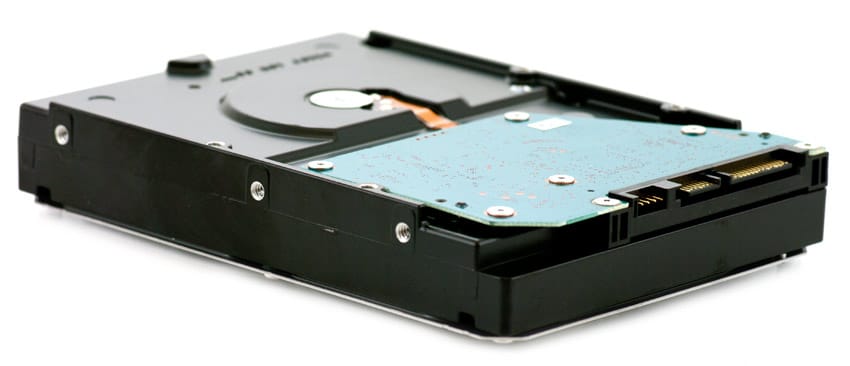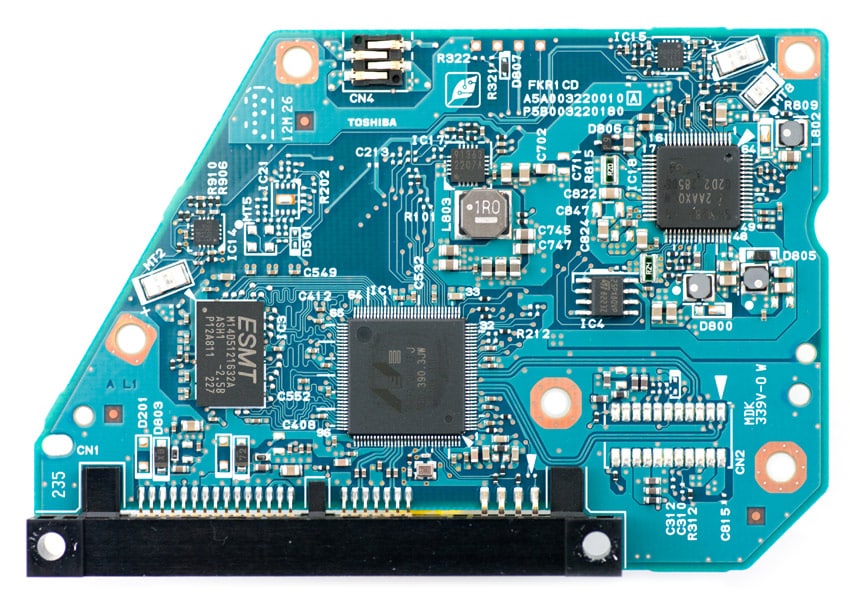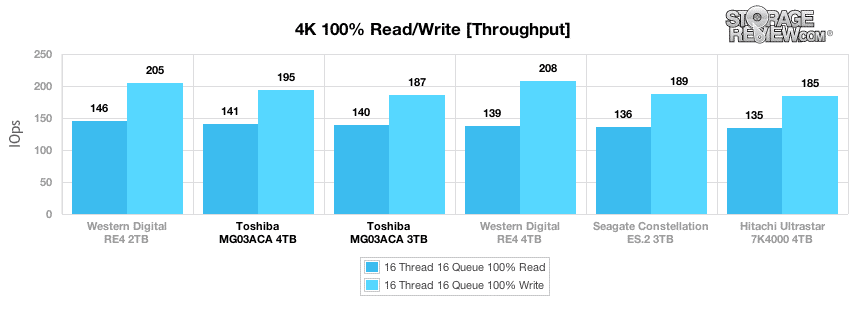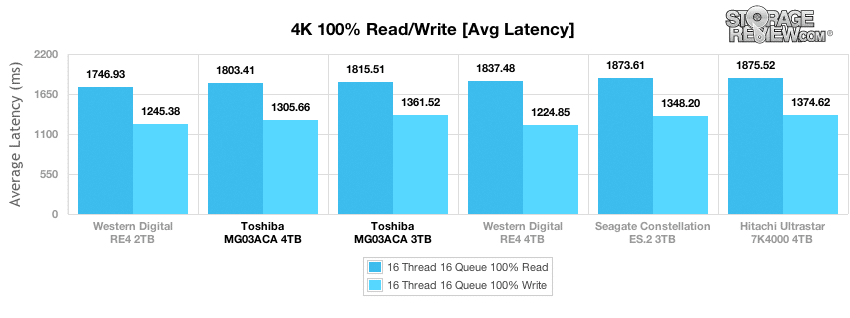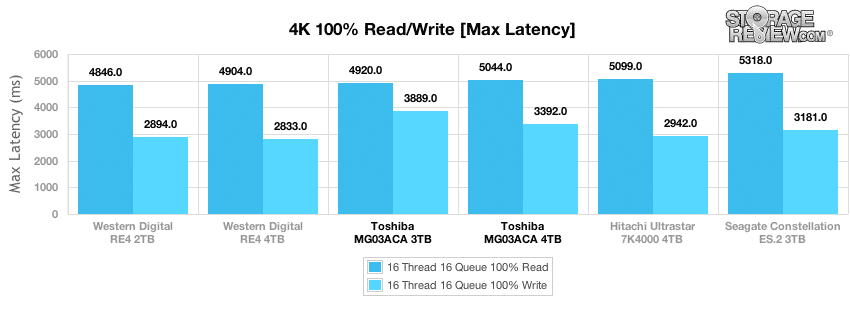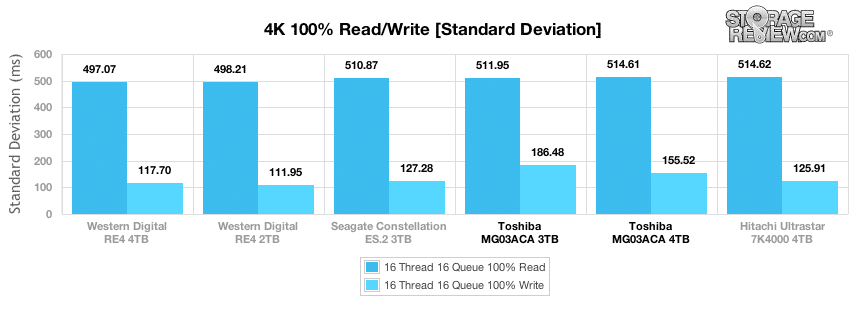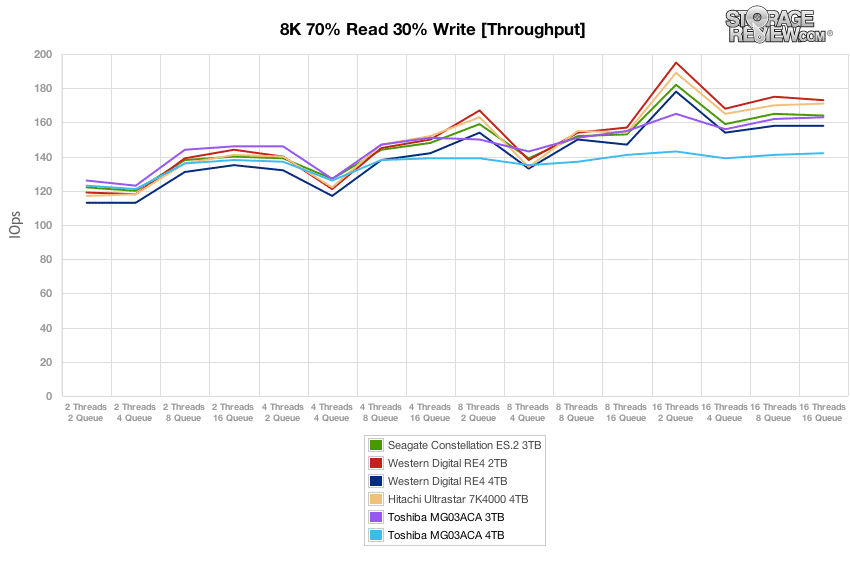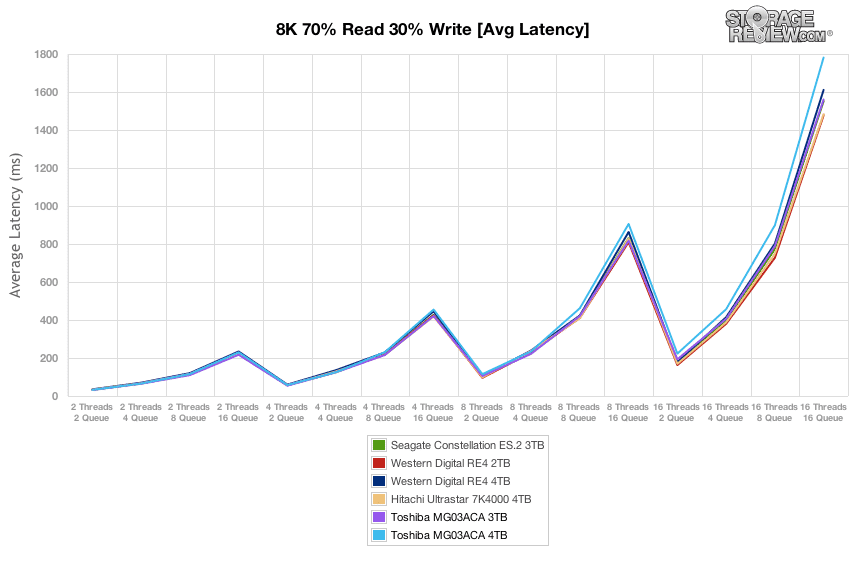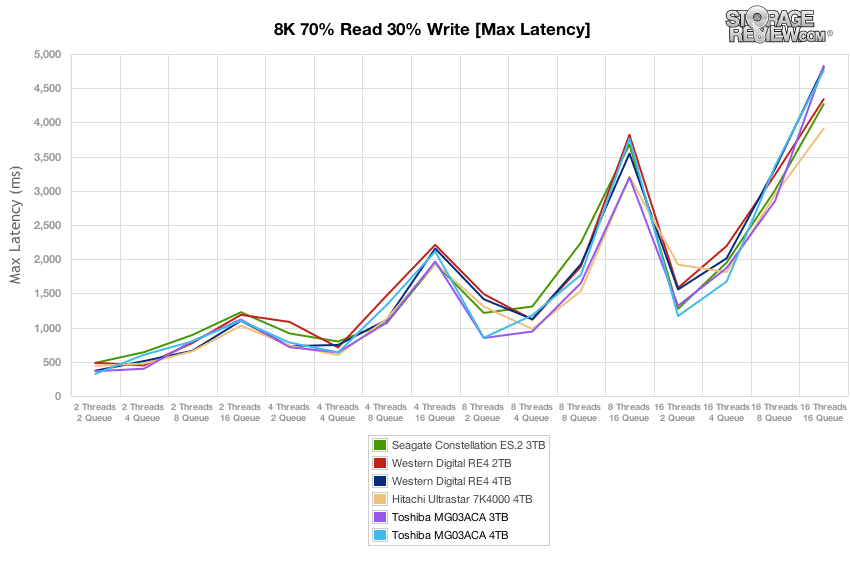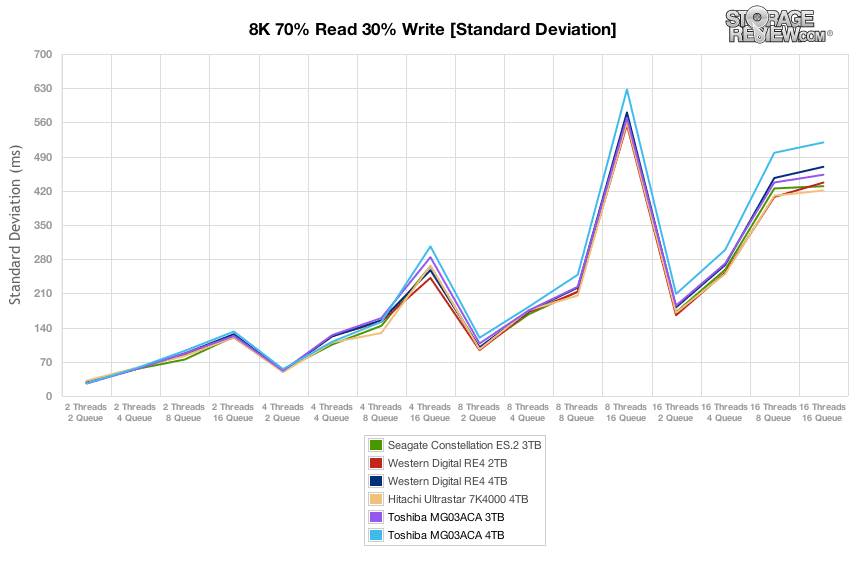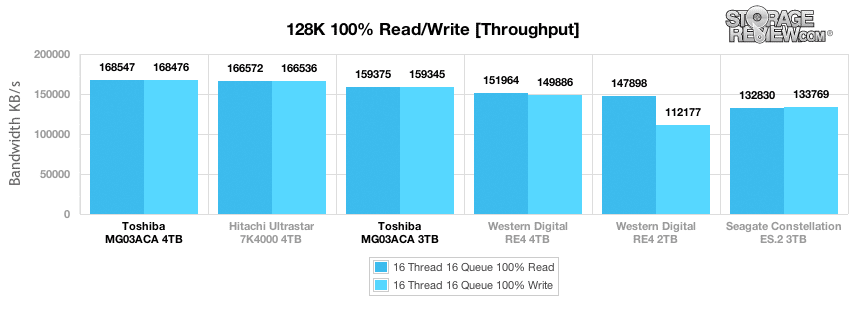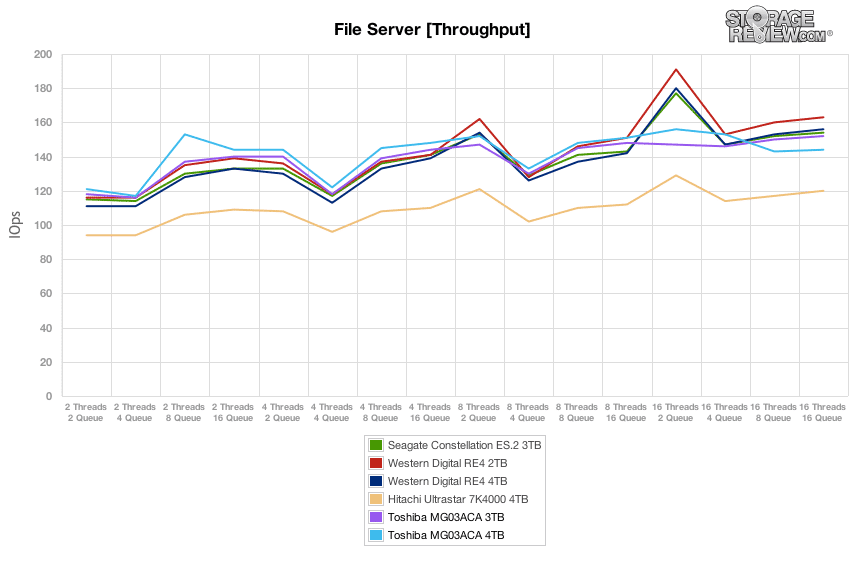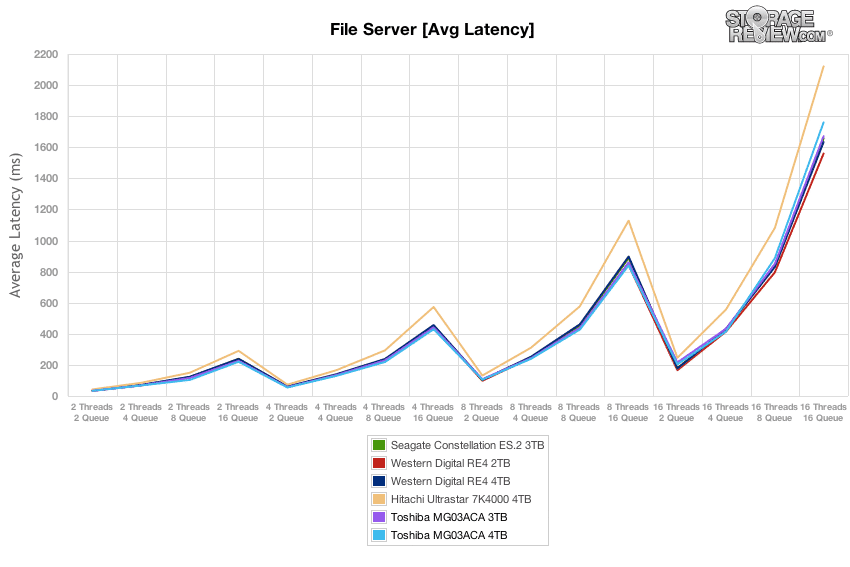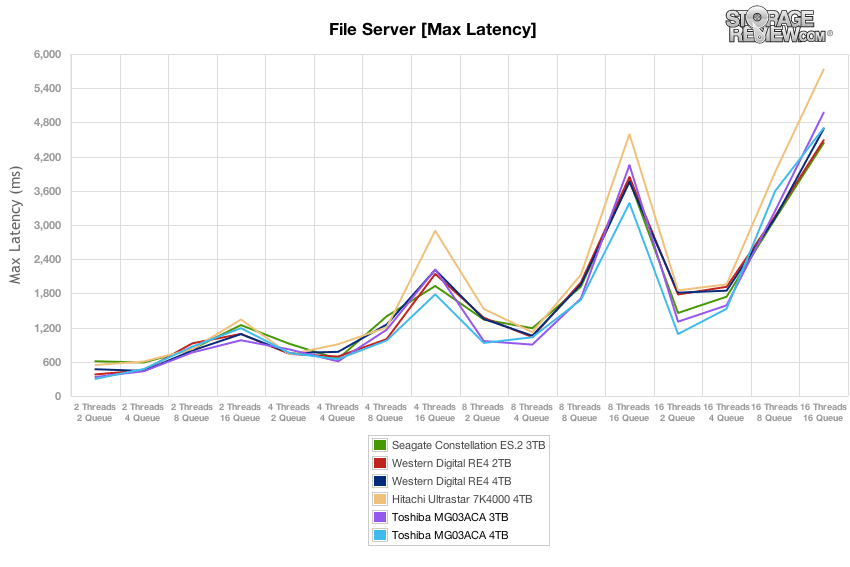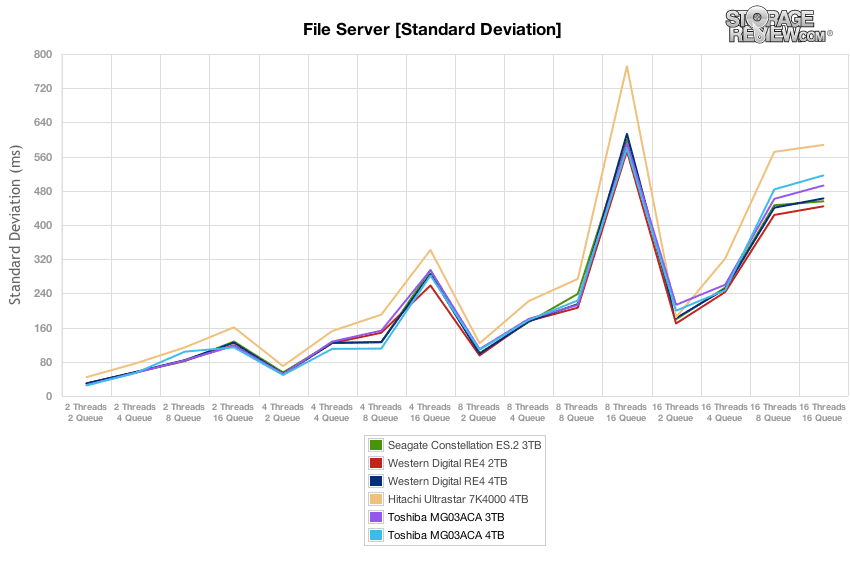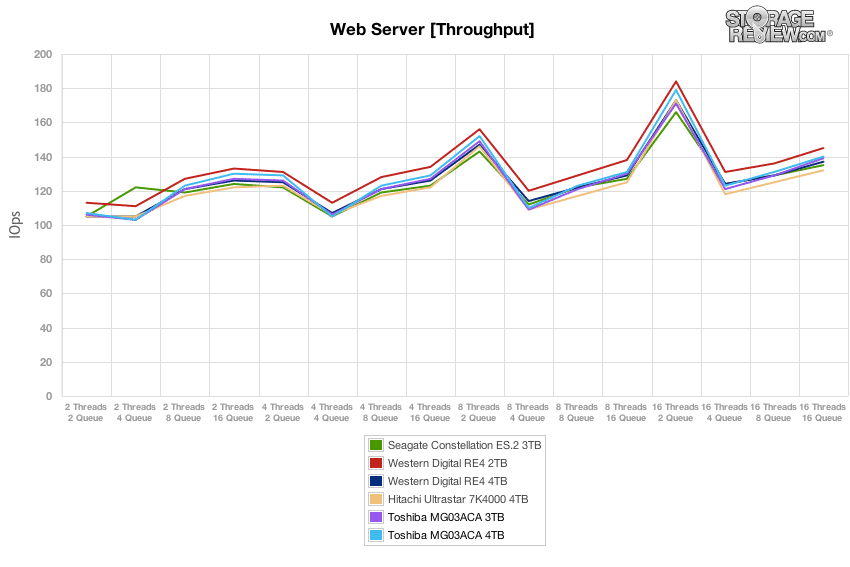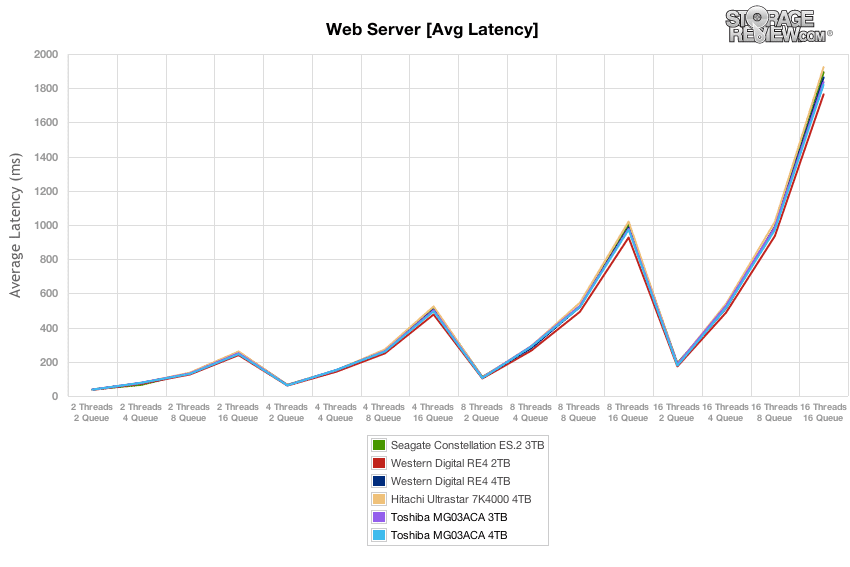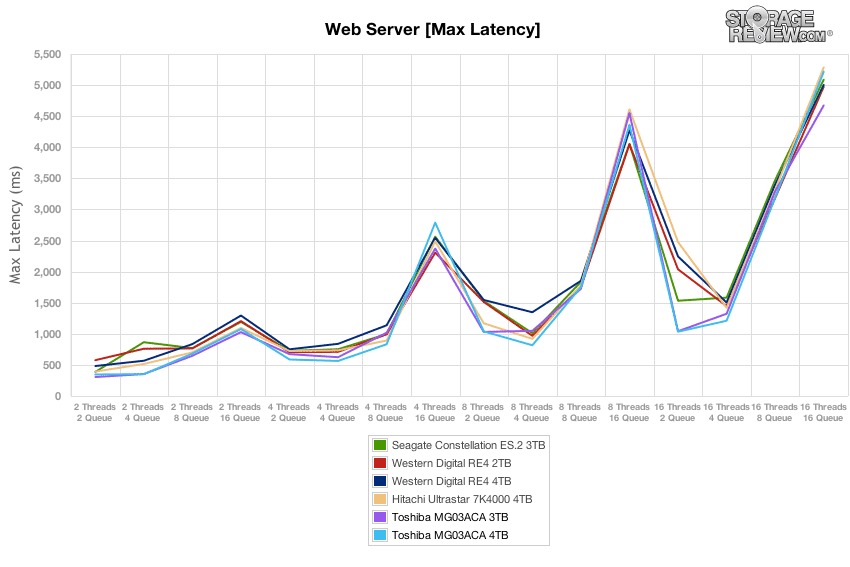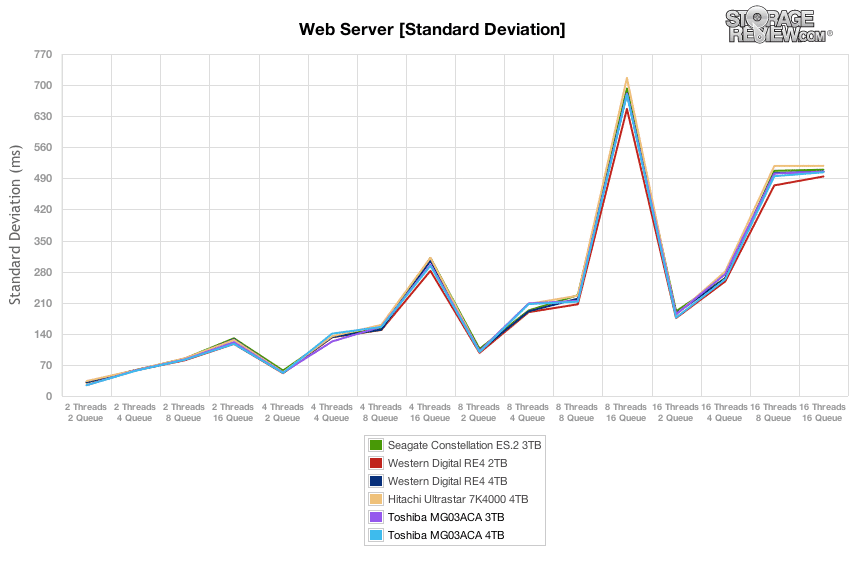
Toshiba’s new MG03 SATA enterprise 3.5″ hard drives are now being offered as standard or encrypted models in the industry’s highest capacity ranging up to 4TB while spinning at 7,200RPM with a SATA 6Gb/s interface. As we noted in our recent review of the MG03 4TB SAS, Toshiba has seen increasing demand for encryption and as such, they will now be offering it across all of their new models. As with the sibling SAS drives, the SATA drives offer a big jump in capacity to 4TB from 2TB as well as up to 18% faster sustained transfer rates and power consumption reduced significantly by up to 15%. Rounding out the enhancements, this new generation of SATA drives now interface over 6Gb/s SATA instead of 3Gb/s.
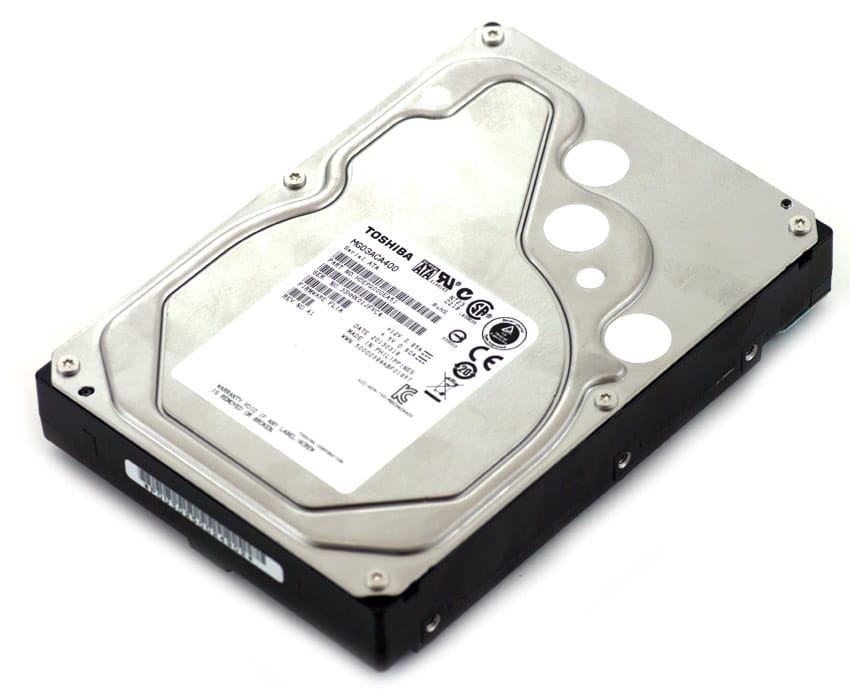
As with the MG03 SAS model we reviewed, we expect enterprise reaction to these newly available 4TB drives to yield high adoption rates. Many organizations’ legacy HDDs may be 2TB or even just 1TB capacities, and those groups have been waiting out the readily-available 3TB models for the more robust 4TB drives. The name of the game is economics here, and as such, solid performance high-capacity drives go a long way in this space. Toshiba designed these drives for use in single servers or storage devices with single controllers.
The Toshiba MG03 SATA 3.5″ drives come with a 5-year warranty. Our review model is the standard (unencrypted) 4TB drive.
Toshiba MG03 SATA Enterprise 3.5″ Specifications
- Capacities
- 1TB
- Standard (MG03ACA100)
- SED (MG03ACA100Y)
- 2TB
- Standard (MG03ACA200)
- SED (MG03ACA200Y)
- 3TB
- Standard (MG03ACA300)
- SED (MG03ACA300Y)
- 4TB
- Standard (MG03ACA400)
- SED (MG03ACA400Y)
- Performance
- Rotational Speed: 7,200 RPM
- Average Latency: 4.17ms
- Maximum sustained transfer rate :165 MB/s (4TB models); 155 MB/s (1TB, 2TB, 3TB models)
- Buffer Size: 64MiB FIFO ring buffer
- Encryption
- TT10 SANITIZE crypto-erase and TCG-Enterprise SSC (SAS models)
- T13 SANITIZE crypto-scramble and T13 ATA security erase (SATA models)
- Power
- Voltage 5V±5% , 12V±5%
- Read/Write Power: 11.3 watts
- Low Power Idle: 6.0 watts
- Environmental
- Temp – Operating: 5° to 55°C (41° to 131°F)
- Temp – Non-Operating: -40° to 70°C
- Vibration – Operating: 7.35 m/s2 (0.75G, 5300Hz) / 2.45 m/s2 (0.25G, 300500Hz)
- Vibration – Non-Operating: 49 m/s2 (5G, 5500Hz)
- Shock – Operating: 686 m/s2 (70G) 2ms
- Shock – Non-Operating: 2,940 m/s2 (300G) 2ms
- Acoustics (idle) 31 dB
- MTTF: 1,200,000 hours
- Load/Unload: 600,000 times
- Dimensions (WxDxH) 101.6 mm x 147 mm x 26.1 mm
- Weight: 720g (Max)
- 5 Year Warranty
Design and Build
Toshiba’s MG03 SATA enterprise hard drives have a simple silver on black design. Starting from the top, the cover is screwed on with six screws. In the middle, there is a metal inlay that houses the product information. There are also 5 white stickers spread across the top of the drive. The sides of the MG03 SATA provide six screw holes for simple mounting. On the rear of the drive is where users will be able to find connectors for power and SATA.
The Toshiba MG03’s body is solid black, and as we move to the bottom of the drive, that’s where the circuit board is. Removal is intuitive and can be done by unscrewing 4 short screws and 2 long screws. Looking at the circuit board, Toshiba has installed a foam pad that absorbs vibrations between the drive and circuit board.
The circuit board includes a Marvell 88i9312 controller chip, 64MB of DRAM from a ESMT module, and a Texas Instruments motor driver. Inside of the drive, there are 5 platters at 800GB each on 4TB models and 4 platters at 750GB each on 3TB drives.
Testing Background and Comparables
Comparables for this review:
All enterprise HDDs are benchmarked on our enterprise testing platform based on a Lenovo ThinkServer RD240. The ThinkServer RD240 is configured with:
- 2 x Intel Xeon X5650 (2.66GHz, 12MB Cache)
- Windows Server 2008 Standard Edition R2 SP1 64-Bit and CentOS 6.2 64-Bit
- Intel 5500+ ICH10R Chipset
- Memory – 8GB (2 x 4GB) 1333Mhz DDR3 Registered RDIMMs
- LSI 9211 SAS/SATA 6.0Gb/s HBA
Enterprise Synthetic Workload Analysis
Our enterprise hard drive benchmark process preconditions each drive into steady-state with the same workload the device will be tested with under a heavy load of 16 threads with an outstanding queue of 16 per thread, and then tested in set intervals in multiple thread/queue depth profiles to show performance under light and heavy usage. Since hard drives reach their rated performance level very quickly, we only graph out the main sections of each test.
Preconditioning and Primary Steady-State Tests:
- Throughput (Read+Write IOPS Aggregate)
- Average Latency (Read+Write Latency Averaged Together)
- Max Latency (Peak Read or Write Latency)
- Latency Standard Deviation (Read+Write Standard Deviation Averaged Together)
Our Enterprise Synthetic Workload Analysis includes four profiles based on real-world tasks. These profiles have been developed to make it easier to compare to our past benchmarks as well as widely-published values such as max 4k read and write speed and 8k 70/30, which is commonly used for enterprise drives. We also included two legacy mixed workloads, the traditional File Server and Webserver, each offering a wide mix of transfer sizes.
- 4k
- 100% Read or 100% Write
- 100% 4k
- 8k 70/30
- 70% Read, 30% Write
- 100% 8k
- 128k (Sequential)
- 100% Read or 100% Write
- 100% 128k
- File Server
- 80% Read, 20% Write
- 10% 512b, 5% 1k, 5% 2k, 60% 4k, 2% 8k, 4% 16k, 4% 32k, 10% 64k
- Webserver
- 100% Read
- 22% 512b, 15% 1k, 8% 2k, 23% 4k, 15% 8k, 2% 16k, 6% 32k, 7% 64k, 1% 128k, 1% 512k
In the first of our enterprise workloads, we measured a long sample of random 4k performance with 100% write and 100% read activity to get our main results. The Toshiba MG03ACA measured 141 IOPS read from the 4TB capacity and 140 IOPS from the 3TB model. Random write speeds measured 195 IOPS and 187 IOPS from the 4TB and 3TB models respectively.
In our main average latency segment with a load of 16T/16Q, we measured an average read latency of 1803.41ms and a write latency of 1305.66ms from the Toshiba MG03ACA 4TB which was near the sibling 3TB model as well as the WD RE4 2TB and 4TB drives.
With just read activity, the Toshiba MG03ACA 3TB registered slightly better with a max response time of 4920.0ms compared to 5044.0ms. Write activity max latency at for the 4TB was lower at 3392.0ms. This placed the drives at the bottom of the group for 4k max write latency, but in the middle for read activity.
Reviewing the 4k latency consistency in our standard deviation section, the Toshiba MG03ACA 4TB tested at 514.61ms for read activity, and 155.52ms for write activity. This was slightly more latency than the sibling 3TB model, and the drives both fell to the back of the group with the Hitachi Ultrastar 7K4000 4TB.
Compared to the fixed 16 thread, 16 queue max workload we performed in the 100% 4k write test, our mixed workload profiles scale the performance across a wide range of thread/queue combinations. In these tests, we span workload intensity from 2 threads and 2 queue up to 16 threads and 16 queue. In the expanded 8k 70/30 test, the Toshiba MG03ACA 4TB and 3TB produced just over 140 and 160 IOPS, respectively.
Evaluating the 8k 70/30 average response times, the Toshiba MG03ACA 4TB and 3TB drives maintained a consistency throughout the testing with little distinction amongst the group. However, the Toshiba MG03ACA 4TB peaked quite a bit higher around 1800ms.
Over the duration of our primary tests at varying thread and queue depth levels, the Toshiba MG03ACA 4TB had the highest max latency along with the 3TB at the 16 thread and 16 queue depth level – around 4,800ms.
For the entire thread/queue spectrum, the Toshiba MG03ACA 4TB had slightly higher peaks.
Our 128k test is a large block sequential test which shows the highest sequential transfer speed for a platter drive. Taking a look at 128k performance for both 100% write and 100% read activity, the Toshiba MG03ACA 4TB achieved the highest marks at 168547KB/s read and 168476KB/s write.
The next workload we used is our File Server profile which puts the drives through a varying workload. We scaled the thread and queue count from 2T/2Q up to 16T/16Q. In this profile, the Toshiba MG03ACA 4TB ranked at the near the back of the pack around 150 IOPS beating out just the Hitachi Ultrastar 7K4000 4TB.
At all queue depths, the Toshiba MG03ACA 4TB peaked near the other drives, though at the terminal queue depth, it posted slightly more average latency near 1780ms, better than just the Hitachi Ultrastar 7K4000 4TB.
Comparing peak response times in our File Server profile, the Toshiba MG03ACA 4TB had low peaks throughout most of the queue depths, finishing near the middle of the group.
Looking at the latency standard deviation, the Toshiba MG03ACA 4TB and 3TB were fairly competitive throughout up until 16T8Q where they came in near the bottom of the pack in latency consistency.
Our final test is the Web Server test, which is traditional 100% read activity. The Toshiba MG03ACA 4TB and 3TB were near the top of the group, peaking at around 175 IOPS at 16T2Q and finishing only behind the WD RE4 2TB at 140 IOPS.
All drives performed competitively in our next test of average latency in the Web Server profile, though the WD RE4 2TB had the best average latency, with the Toshiba MG03ACA drives barely edged out for the best numbers.
For the duration of the varying loads in our Web Server profile, the Toshiba MG03ACA drives performed well with the 3TB drive earning the lowest max latency.
Comparing latency consistency in our read-only Web Server profile, the Toshiba MG03ACA 4TB and 3TB performed consistently near the other HDDs for a middle of the pack finish.
Conclusion
The Toshiba MG03 SATA drives are a step up from the previous generation as they now offer up to 4TB of capacity and SATA 6Gb/s interface and a few other updates. Toshiba’s performance ratings also put the drives at speeds up to 18% faster for sustained transfer rates while still reducing overall power consumption up to 15%. With this new MG03 generation, Toshiba also adds a feature that is hugely important to many enterprise use cases – optional encryption.
In terms of performance compared to other 7,200RPM SATA hard drives in the market, Toshiba led the pack with the fastest sequential transfer speeds from its 4TB model, and Toshiba came in towards the middle with its 3TB version. Looking at random and mixed workloads, the MG03 SATA-series offered strong performance, although not entirely class-leading. The MG03 SATA came in towards the middle of the pack and in certain workloads saw its performance taper off under higher thread/queue loads. Looking at its strengths, it was able to keep its max latency suppressed better than other drives in demanding conditions, although in our 4k random write workload those figures ascended higher than the other competing models. Overall, the Toshiba MG03 SATA series firmly plants itself in the 3.5″ SATA enterprise space and is offered with a wide range of security features that aren’t offered by all models in this category.
Pros
- Increased capacity and updated SATA 6Gb/s interface
- Optional SED encryption
- Highest sequential throughput in 3.5″ enterprise SATA class
Cons
- Middle of pack mixed workload performance
Bottom Line
The Toshiba MG03 SATA 4TB is a robust capacity enterprise-class drive that is well-designed for applications ranging from in-host server storage to storage arrays that don’t require SAS features.

